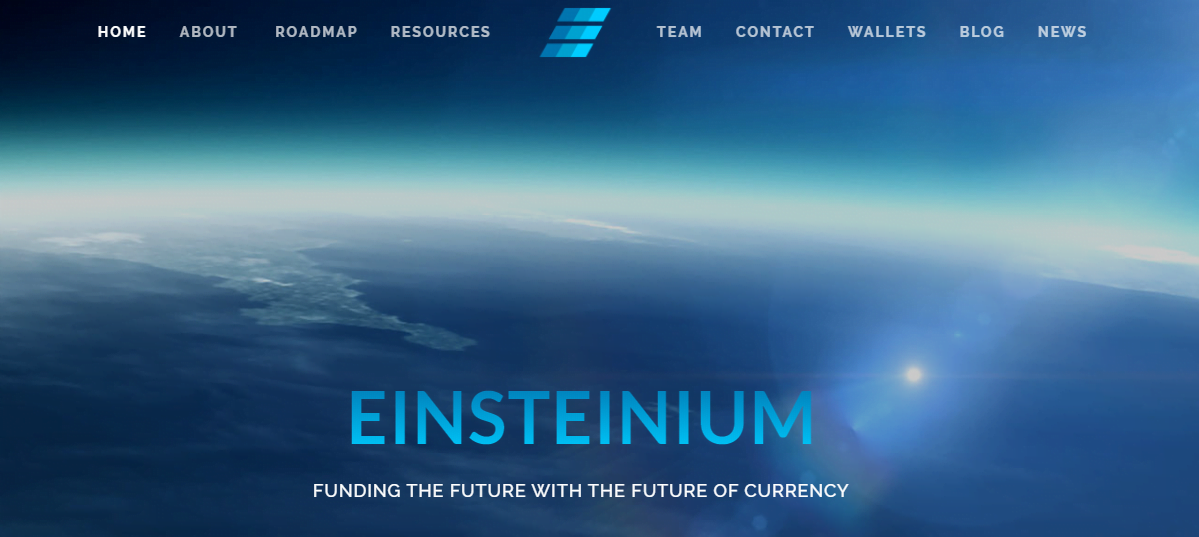With the crypto domain branching out at a rapid rate, there are new alt-assets being released to the public on a day-to-day basis. Einsteinium is one such platform that has been designed to facilitate development and innovation within the scientific domain through the use of blockchain technology.
Many crypto enthusiasts might be familiar with Einsteinium as being the currency that lept into the top 50 thanks to its big value leap over the new year, sending its price from US$0.80 to US$2.00 within a week.
Einsteinium has been developed to aid various scientific, technological, and philanthropic projects and carries with it a very fitting abbreviation of EMC2. It is governed by a parent company called the Einsteinium Foundation which serves as a hub for various charity funds.
Overview of Einsteinium
- Open source based.
- Acts as a crowdfunding platform for many scientific projects that can help humanity as a whole.
- Can be used to disseminate information and knowledge to the masses through the use of the blockchain.
- Makes use of a unique Proof of Work consensus.
Key Features

To start things off, all users will be issued a web wallet designed to not only store various digital assets, but also be used to issue invoices. Additionally, it serves as a payment module wherein customers can request payments without having to worry about geographical distance.
In addition to the web wallet, the platform will also provide users with a mobile currency holder called the EMC2 wallet. It provides users with full access to their funds and can be used remotely with a smartphone.
In terms of funding, Einsteinium makes use of a service called EMC2ME that is designed to help raise money for worthy scientific projects in an easy, hassle-free manner.
Other key offerings include:
- Weeee: this is a social media platform with a built-in messenger and data sharing protocol. It allows users to give each other gifts in the form of native token currencies which can later be redeemed for gifts as well as online services.
- Debit card: in the near future, customers will have access to a fully functional debit card that can be used to hold EMC2 tokens and facilitate daily transactions. All payments are processed in real time.
- Compatibility: Einsteinium makes use of an API that is fully compatible with programming languages such as Node.js, C#, Java, and PHP. As a result, businesses can easily adopt this currency without having to change their governance frameworks.
- 4YOUEMC2: this is a marketplace designed to make the exchange of digital goods easy and convenient for customers through the use of EMC2 tokens.
How Einsteinium works
In order to select projects worthy of funding, the Einsteinium platform makes use of specialized epochs within its proof of work consensus. In its most basic sense, we can think of an epoch as the amount of time it takes miners to build 36,000 blocks on Einsteinium’s public ledger.

Relationship between miner rewards and epoch times (courtesy of the EMC2 foundation)
This period has been found to be somewhere in the vicinity of 26 days, and once an epoch is completed, all of the proceeds are directly funneled to the associated research project. Additionally, the Einsteinium community has voting rights when it comes to ascertaining the potential of particular projects and research cases.
In all, there will be a total of 730 epochs that are available to miners to make use of. Each time the network moves towards a new epoch, the reward yield gradually diminishes and the number of coins offered by each reward decreases.

Wormhole Event value over time (courtesy of the EMC2 foundation)
At this point, it should be mentioned that the Wormhole Event is Einsteinium’s distinct contribution to the existing PoW model. To further elaborate on this phenomenon, we can see that it is randomized, but through the use of statistical data, it has been found to occur once within each epoch. It lasts for a total of 180 blocks, and during this time there are many rewards that can be mined.
About Einsteinium
According to the official company website, Einsteinium was launched all the way back in 2014. However, the project started to gain momentum in 2017 when the Einsteinium Foundation was officially launched.
Jonathan Lauziere is one of this project’s board members and also takes care of the financial side of things. He is a computer science graduate who has been in the crypto domain for over 5 years now. Malden Trifunovic is the company’s chairman. He describes himself as a serial entrepreneur, and prior to heading EMC2 was in charge of a consulting business for over a decade. According to his online bio, Malden has a master’s degree in microprocessor design, and has been a C++ developer since the age of 14.
Lastly, Daniel Johns serves as the project’s chief strategist. He holds a bachelor’s degree from Gettysburg College and has been a crypto enthusiast from the very start. In addition to his work at Einsteinium, he is also the CFO of PHL Bitcoin, the company behind the first BTC ATM launched in Philadelphia.
Token performance history
While this currency remained under the radar for the first couple of years after its release, EMC2 tokens have picked up a lot of steam within the past couple of months.

EMC2 token one-year performance chart (courtesy of CoinMarketCap)
As is clear from the chart above, the token’s price started peaking in January 2018, and rose as high as US$2.55. Since then its value has stabilized, and it currently stands at US$0.435.
Final thoughts
With Einsteinium promising to help promote scientific innovation and development, it has good monetary potential in the coming future.
If investors would like to purchase EMC2 tokens, they can do so by visiting Bittrex, Poloniex, or Cryptopia.

